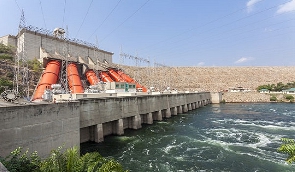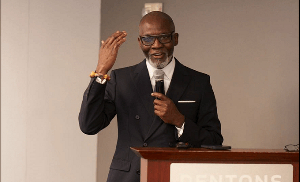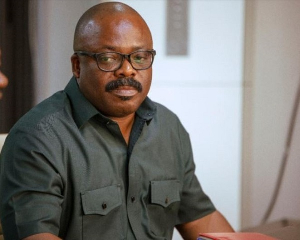Exactly 54 years ago on January 22, 1996, Ghana's first president, Osagyefo Dr. Kwame Nkrumah inaugurated the Akosombo Dam across the Volta River.
The Akosombo dam created a hydroelectric power plant, which fuelled an aluminium smelter and provided electricity to urban centers and adjacent countries like Togo and Benin.
However, the main purpose of the dam was to provide electricity solely for the aluminium industry. It is known to be "the largest single investment in the economic development plans of Ghana"
History of the Akosombo Dam
The story begins in 1949 when the Gold Coast Government commissioned a British firm of consulting engineers, Sir William Halcrow and Partners, to examine a proposed power scheme and report on the wider aspects of the development of the Volta River Basin in respect of health, navigation and communications."
The resulting report was published in 1951, but in the meantime the Government had been pursuing its own lines of investigation. In particular, it had come to the conclusion that what was needed was a port to serve Accra and the east, in addition to the expanded port facilities at Takoradi.
Accordingly, when the consultants' report emphasized, among other things, that a new harbour in the east would be essential if the Volta River Project were to materialize, the Government felt that its view in this connection had been endorsed. Sure enough, within six months preliminary work had begun on the Habra site at Tema and on the new town of Tema behind it - but as for the power project itself, many years still had to pass before it even approached fulfilment.
Thus, the next step came in 1953 when, in accordance with the Government's promise to the people to examine the possibility of harnessing the power of the Volta, the Volta River Preparatory Commission was established under Commander (now Sir Robert) Jackson.
By this time, the Gold Coast had a new Government, elected in 1951, with an African majority, but by the time the Preparatory Commission made its report in 1956 the country was to all intents and purposes self-governing under the leadership of its Prime Minister, Dr. Kwame Nkrumah.
Even so, with virtual independence, the fate of the project was still uncertain-and the need for perseverance paramount. For, though the Commission found that the project was economically feasible and technically sound, it involved an eventual investment of over 552 million cedis. (£230 million).
This sum was to cover the cost of the dam and power installation (at Ajena), the opening up and equipping of the bauxite mines and a complete plant for producing aluminium from bauxite to be sited at Kpong.
The scheme, in other words, was fully comprehensive as it stood then. But it was also enormously costly with the result that very extensive participation from outside sources was essential. So it was that for the next few months, the Government, in addition to an ambitious development program in agriculture, education, health and so on, occupied itself with seeking the necessary outside help.
Fast-forward, almost every government department has been involved, and so has the Ghana army, the universities of Ghana, and various other organizations, from the Workers Brigade and the United Ghana Farmers' Council Co-operatives to the United Nations National Physical Plan Mission and FAO.
But any organization, however vital its duties may be, takes time to establish and, those nine months of the Authority's existence while negotiations were still proceeding have been invaluable: they enabled the Authority to formulate its plans, and to decide how best to find and then deploy the assistance it needed. By its "precipitateness", indeed, the Ghana Government has saved a full year in the development of the project.
After so much time and effort, Ghana could not afford to wait any longer before transforming the project into reality in 1996.
General News of Wednesday, 22 January 2020
Source: www.ghanaweb.com













